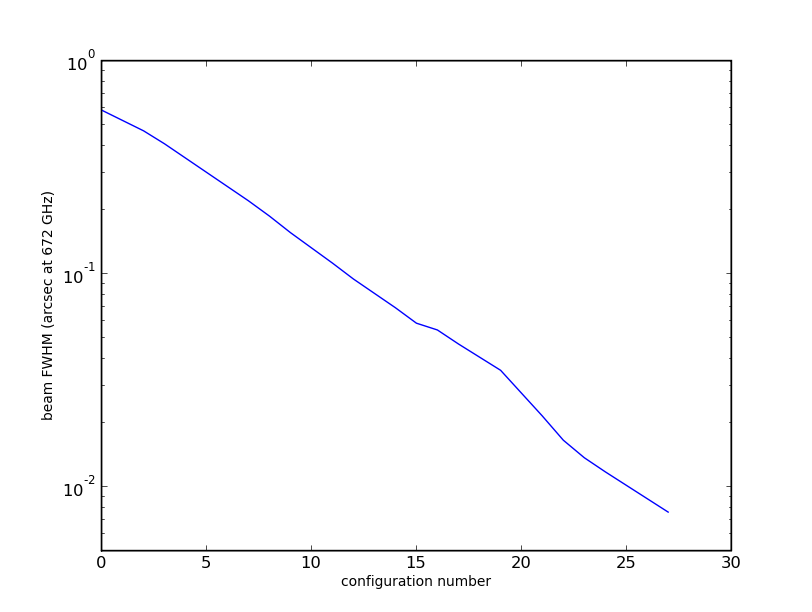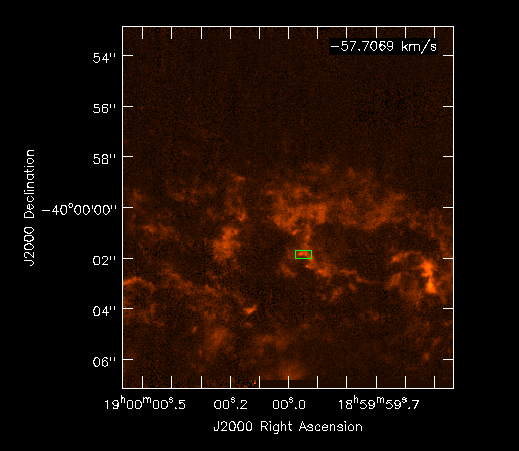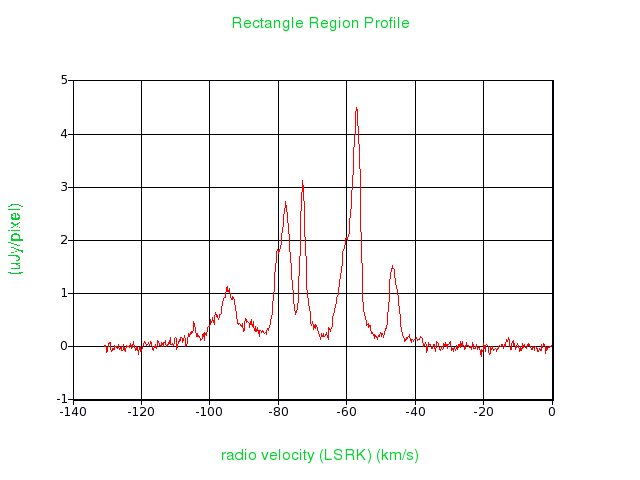Simulation Recipes: Difference between revisions
No edit summary |
No edit summary |
||
| Line 7: | Line 7: | ||
simdata2 version of script and output: | simdata2 version of script and output: | ||
[http://casaguides.nrao.edu/images/f/f7/Psim2.skymodel.png] | |||
simdata (old task) version of script and output: | simdata (old task) version of script and output: | ||
Revision as of 19:11, 18 May 2010
↵ Simulating Observations in CASA
Protoplanetary disk
this fits file is a model of a protoplanetary disk from S. Wolf. ** If you use it for anything more than learning CASA, please cite Wolf & D'Angelo 2005.
simdata2 version of script and output: [1]
simdata (old task) version of script and output:
Nearby edge-on spiral
Roughly modeled after NGC891
This article is under construction. Watch this space!
- model data: Milky Way 13CO from the Galactic Ring Survey on the 14m FCRAO
- units: K - first convert to flux surface brightness
Jy/Sr = 2x1023 k T / λ2, = 4x108T at 110GHz.
now we need to decide if this model data will work at the desired pixel scale
- the GRS resolution of 40" at ~10kpc is 0.04" at 10Mpc, so we should be able to do a simulation of observing at ~0.1-0.2". The resolution plot (
 ) indicates that for ALMA at 100GHz, configuration 20 is appropriate.
) indicates that for ALMA at 100GHz, configuration 20 is appropriate. - if we intend to set cell=0.04arcsec in simdata, then the cube needs to be multiplied by
4x108 * (.04/206265)2 = 1.4x10-5 to obtain Jy/pixel. The cube peaks at ~20K, so we can perform the simulation with inbright=3e-4, which should yield a peak of ~1mJy/bm.
will we be dominated by the noise in the input model?
- input noise ~150mK or S/N~20, so at our scaled intensity, ~0.05 mJy/bm. The exposure time calculator says that ALMA will achieve 2.5mJy/bm in 2 hours for the input 212m/s channel width (0.075MHz), so the noise in the input model should not affect our results.
- We do have a sensitivity issue though - if we decrease the spectral resolution by a factor of 6 (bin the input channels in some other program - simdata will know how to do that in the future but not yet), and plan for 3 8-hr tracks, then the sensitivity calculator suggests that we'll get <0.25mJy rms, or S/N>10 per beam. Rather than simulate 3 days of observing, I'll increase inbright by sqrt(3) and simulate one 8 hour track.
setup:
- the ALMA 12m primary beam is 50" so we'd space a mosaic by 25", but the model cube has 326x357 pixels, or 13 arcsec with our small pixels. That's a lot smaller than the primary beam, so it doesn't matter much what output image size we ask for.
- there are 659 channels in the input cube, but as noted above we want to bin those to 109 channels of 1.2 km/s each.
here're the simdata inputs : File:Simdata.n891.txt
CASA <> execfile("simdata.ngc891.txt")
CASA <> go simdata
here's the cube with the simdata's scaling and World Coordinate System:

and a spectral profile in the box marked in green
